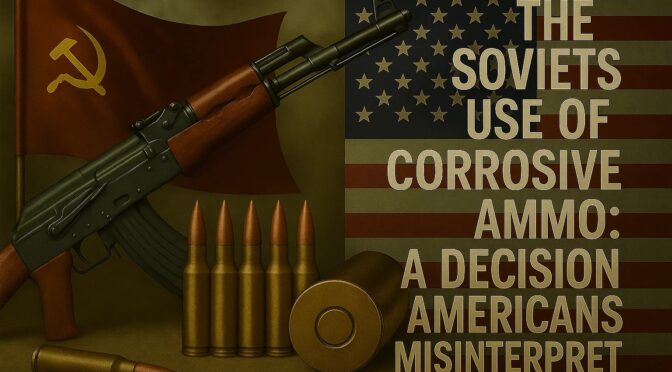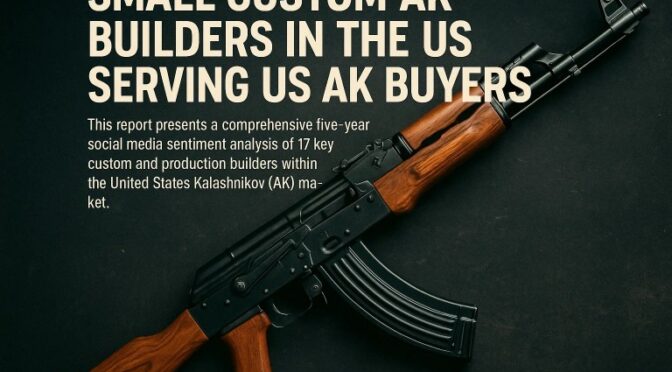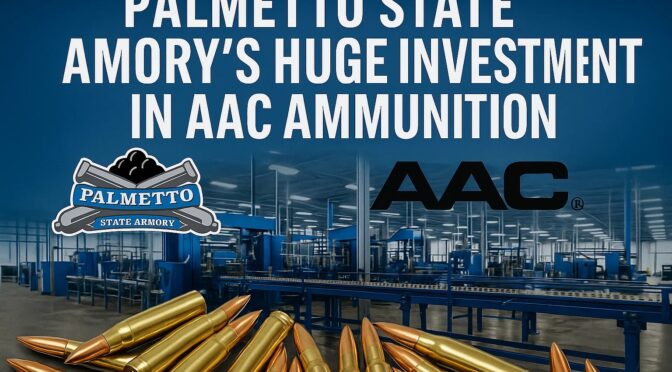The Western perception of Soviet and Russian weaponry has long been colored by a simplistic and often dismissive maxim: “crude but effective.” This phrase, while containing a kernel of truth, fundamentally misunderstands the sophisticated and deeply pragmatic philosophy that underpinned the design and production of the Soviet Union’s vast arsenal. The defining characteristics of Soviet arms—their ruggedness, operational simplicity, and the sheer, overwhelming numbers in which they were produced—were not the accidental byproducts of a lagging technological base. Rather, they were the deliberate and meticulously engineered outcomes of a coherent national strategy, a philosophy forged in the crucible of revolution, civil war, and the existential struggle of the Great Patriotic War.1
This report will deconstruct the Soviet military doctrine of reliability, moving beyond superficial analysis to reveal a completely integrated, self-reinforcing system where political ideology, military strategy, industrial capacity, and human factors converged. This system was built upon three interconnected pillars, concepts that were not merely engineering guidelines but strategic imperatives:
- Надёжность (Nadyozhnost’) – Reliability: This term signifies more than a simple absence of malfunctions. It represents an absolute, uncompromising, and predictable functionality under the worst imaginable conditions of combat and environment. It is the core virtue from which all other design considerations flow.
- Простота (Prostota) – Simplicity: This principle denotes a radical simplicity that permeated every aspect of a weapon’s life cycle. It encompassed ease of manufacture by a semi-skilled workforce, intuitive operation by a minimally trained conscript, and straightforward field maintenance with the most basic of tools, if any at all.
- Массовое производство (Massovoye proizvodstvo) – Mass Production: This was not simply an industrial goal but a central tenet of Soviet military art. The ability to achieve overwhelming numerical superiority in men and materiel at the decisive point of conflict was seen as a prerequisite for victory.
To fully comprehend the engineering of a T-34 tank or an AK-47 rifle, one must first understand the high-level military doctrine that created the demand for such weapons. This analysis will begin by examining the foundational principles of Soviet military thought, exploring how the unique nature of its strategic outlook dictated the required characteristics of its hardware. It will then trace the crystallization of this design philosophy during the brutal fighting on the Eastern Front, where theoretical doctrine was hammered into hard-won engineering wisdom. Through detailed case studies of iconic weapon systems from World War II and the Cold War, this report will demonstrate how these principles were made manifest in steel. Finally, it will follow the evolution of this doctrine into the Cold War, showing how it was perfected and ultimately became a technological path with both profound strengths and inherent limitations.
Section 1: The Doctrinal Imperative: The Nature of Soviet Warfare
The design of any nation’s military hardware is ultimately a response to a demand signal sent from its highest strategic echelons. In the Soviet Union, this signal was exceptionally clear, powerful, and all-encompassing. Soviet weapon design cannot be understood as a purely technical exercise; it was a direct and logical extension of the state’s official theory of war, the operational art of its generals, and the fundamental nature of the army it was meant to equip.
Subsection 1.1: Военная доктрина (Voyennaya doktrina) – The State’s Theory of War
In Western military thought, “doctrine” often refers to the accumulated best practices for employing forces on the battlefield. The Soviet concept of Военная доктрина (Voyennaya doktrina), or Military Doctrine, was far more profound and comprehensive. It was officially defined as “the Marxist-Leninist-based view accepted by the government on the nature of war, the use of armed forces in conflict, and the preparations of a country and its armed forces for war”.51 This was not a manual for generals but the state’s unified political and military policy, providing the moral and ideological justification for the entire defense establishment.51
This doctrine was composed of two distinct but inseparable dimensions: the socio-political and the military-technical.2
- The Socio-Political Dimension: Formulated by the Communist Party leadership, this aspect defined the fundamental political context of any potential conflict. It addressed questions of who the likely enemies were (capitalist states) and the inherent nature of the war. According to Marxist-Leninist principles, a socialist state would never initiate a war, as the triumph of socialism over capitalism was seen as historically inevitable. Therefore, Soviet military doctrine was always framed as inherently defensive in its political character; war could only be forced upon the USSR by aggressive capitalist powers.2
- The Military-Technical Dimension: Developed by the professional military and the General Staff, this aspect dictated how the armed forces should be structured, equipped, and employed to win such a war. In stark contrast to its “defensive” political framing, the military-technical side of the doctrine was ruthlessly and unequivocally offensive. Should war be initiated by the West, the Soviet military’s objective was to absorb the initial blow and then launch a massive, decisive, and war-winning counter-offensive aimed at the complete destruction of the enemy’s military and political capacity.2
This dual nature created a clear and demanding set of requirements for the Soviet military-industrial complex. The armed forces had to be large and resilient enough to survive a potential first strike, yet powerful and mobile enough to immediately seize the strategic initiative and carry the fight to the enemy’s territory. This necessitated a massive, well-equipped, and combat-ready defense establishment, and the doctrine served to rationalize the immense allocation of national resources required to sustain it.51
Subsection 1.2: The Principles of Deep Battle and High-Tempo Operations
The military-technical expression of Soviet doctrine was codified in a set of operational principles designed to execute the decisive counter-offensive. Evolving from the pre-war theory of “Deep Battle” (glubokiy boy), these principles emphasized shock, momentum, and mass to overwhelm and paralyze the enemy. The seven core principles of Soviet tactical doctrine were mobility, concentration of effort, surprise, combat activeness, preservation of forces, conformity of the goal, and coordination.3 Of these, two had the most direct and profound impact on weapon design.
First was the principle of Mobility and high rates of combat operations. Soviet operational art envisioned warfare as a continuous, unrelenting series of actions. The goal was to maintain constant pressure, to “crowd” the opponent, and to deny them any opportunity to establish a coherent defense, regroup, or seize the initiative. Combat was expected to continue without pause, regardless of weather, visibility, or terrain.3 This demanded a fully mechanized force, from tanks and infantry fighting vehicles to self-propelled artillery and air defense. The engineering implication was clear: every piece of equipment had to be mechanically robust enough to sustain continuous, high-intensity operations across the vast and punishing landscapes of continental Europe with minimal downtime. A technologically sophisticated tank that required frequent, complex maintenance was a liability in a doctrine that prized ceaseless forward momentum above all else.1
Second was the principle of Concentration of main efforts and creation of superiority in forces and means, a concept encapsulated by the term Массирование (Massirovanie), or “massing”.3 This was the premier method by which Soviet commanders sought to achieve victory. It was not merely about having a larger army in total, but about the ability to rapidly concentrate overwhelming combat power at a decisive point and time to shatter the enemy’s front. This required both a high degree of coordination and, most critically, a vast quantity of equipment. To achieve
massirovanie, one must first have mass. This doctrinal imperative was the primary driver behind the colossal output of the Soviet defense industry. The production of 98,300 tanks and self-propelled guns during World War II, and over 50,000 tanks in the two decades after 1965, was not industrial over-exuberance; it was the literal fulfillment of a core doctrinal requirement.4 You cannot concentrate forces you do not possess.
Subsection 1.3: The Conscript and the Commissar: The Human Factor
The final piece of the doctrinal puzzle was the human element. The Soviet military was, by design and necessity, a mass conscript army. Under the system of general conscription, all able-bodied males were drafted into service, creating a numerically vast force.6 However, the quality of this force, particularly at the individual and small-unit level, was a persistent challenge. Soviet military training, a system with deep institutional roots, often prioritized political indoctrination and rote memorization over the development of tactical initiative.7
Conscripts were trained to execute a set of simple, well-rehearsed battle drills that they could perform by instinct under the stress of combat.9 While effective for large-scale, choreographed operations directed from above, this system, combined with a historically weak NCO corps, did not cultivate the kind of adaptable, problem-solving soldier common in Western armies.9 The expectation was that units would act predictably and follow orders exactly, functioning as reliable cogs in a vast military machine.9
This reality placed a strict and non-negotiable constraint on weapon designers. Equipment had to be designed for the soldier the army had, not the soldier it might wish for. This meant weapons had to be, in the stark assessment of one observer, simple enough for an “illiterate peasant” to learn how to use and maintain.1 Complexity was the enemy. Controls had to be large, intuitive, and operable with gloved hands. Field maintenance had to be achievable with a minimum of tools and training. A firearm that required intricate disassembly procedures or delicate handling was fundamentally unsuited for the Red Army soldier and the doctrine he was trained to execute.11
The interplay between these factors created a remarkably coherent and self-reinforcing system. The state’s political-military doctrine demanded a strategy of high-tempo, mass-based offensive warfare. This strategy, in turn, required a massive conscript army to provide the necessary numbers. The practical realities of training and employing such an army created an ironclad requirement for weapons that were radically simple to operate and maintain. To equip this vast force for a brutal war of attrition, the nation’s industrial base had to be optimized for sheer quantity, which further reinforced the need for simple designs that could be fabricated quickly by a less-skilled workforce in non-specialized factories. The resulting arsenal of simple, reliable, mass-produced weapons was, therefore, the perfect toolset for a doctrine predicated on overwhelming the enemy with numbers and relentless, grinding pressure. Each element—political, military, human, and industrial—logically necessitated and reinforced the others, creating a closed loop of doctrinal and engineering logic.
Section 2: The Philosophy Forged in Fire: Lessons of the Great Patriotic War
If pre-war doctrine provided the theoretical blueprint for Soviet weaponry, the Great Patriotic War (1941-1945) was the forge in which that theory was hammered into unyielding steel. The brutal, existential struggle on the Eastern Front provided a series of harsh, undeniable lessons that transformed abstract principles into a concrete and ruthlessly pragmatic design philosophy. The concepts of reliability, simplicity, and mass production ceased to be mere preferences; they became the absolute prerequisites for national survival.
Subsection 2.1: Надёжность (Nadyozhnost’) – Absolute Reliability as the Paramount Virtue
On the Eastern Front, the environment itself was an active combatant. The biannual распу́тица (rasputitsa), or “season of bad roads,” transformed the vast, unpaved landscape into an ocean of deep, clinging mud that could paralyze entire armies. Wheeled transport became useless, and tanks with narrow tracks and high ground pressure would bog down and become easy targets.52 This was followed by the merciless Russian winter, personified as “General Winter,” where temperatures plummeting to -40°C or below could freeze the lubricants in a weapon’s action, cause improperly formulated steel to become brittle and fracture, and disable complex mechanical or hydraulic systems.13
In this context, the concept of Надёжность (Nadyozhnost’) took on a meaning far deeper than its English translation of “reliability.” It was not just about a low malfunction rate in ideal conditions. It was about guaranteed, predictable functionality in the worst imaginable circumstances. A rifle had to fire after being dropped in the mud of the rasputitsa. A tank’s engine had to start in the depths of winter. A machine gun had to cycle when caked with dust and neglected by an exhausted, freezing conscript. This is why Soviet weapons were often designed with specific environmental challenges in mind. The wide tracks of the T-34 tank were a direct answer to the mud and snow of the steppes.24 The PPSh-41 submachine gun was designed with such generous clearances that it could function even without lubricant, a critical feature when standard oils would congeal into a thick paste in the cold.13 This obsession with performance in extreme conditions became institutionalized, with Soviet and later Russian facilities dedicated to testing weapons in simulated Arctic climates, subjecting them to temperatures from -60 to +60 degrees Celsius.53 A weapon that could not pass these tests was not a weapon at all.
Subsection 2.2: Простота (Prostota) – Radical Simplicity
The German invasion of June 1941 was a catastrophe of unprecedented scale, forcing the Soviet Union to undertake a desperate and monumental industrial evacuation. Hundreds of critical factories were dismantled, loaded onto trains, and relocated east of the Ural Mountains, where they were often reassembled in open fields under punishing conditions.11 This colossal disruption, coupled with the need to rapidly expand the workforce with less-skilled labor (often women and adolescents), placed an immense premium on designs that were simple to manufacture.
The principle of Простота (Prostota), or simplicity, was therefore applied across the entire production and operational chain.
- Simplicity of Manufacture: Soviet designers aggressively pursued methods that minimized the need for complex, time-consuming machining and highly skilled labor. They favored designs that could be built using rough casting, heavy stamping of sheet metal, and extensive welding.54 The PPSh-41 is the quintessential example. Its receiver was formed from a simple, U-shaped piece of stamped steel, and most of its components were joined by welding or riveting. This allowed it to be produced in repurposed automotive plants and other non-specialized workshops, a critical factor in achieving its massive production numbers. This stood in stark contrast to German manufacturing, which often relied on skilled craftsmen and precise machining, resulting in beautifully finished but time-consuming and expensive products.15
- Simplicity of Operation: As dictated by the nature of the conscript army, weapons had to be foolproof. This translated into large, simple controls that were easy to manipulate with cold or gloved hands, a minimal number of firing modes, and intuitive procedures for loading and clearing the weapon.11 The safety/selector switch on the AK-47, for example, is a large, positive lever that is unambiguous in its operation, even if it is not as ergonomic as Western designs.
- Simplicity of Maintenance: In the chaos of the Eastern Front, weapons received brutal treatment and minimal care. Designs had to accommodate this reality. Field stripping needed to be possible with few or no tools, breaking the weapon down into a small number of large, robust components that were difficult to lose in the mud or snow. The Mosin-Nagant rifle, with its simple two-piece bolt body, and the AK-47, which can be disassembled in seconds, are prime examples of this philosophy.12 The T-34’s track pins were designed without locking mechanisms; if a pin worked its way out, the crew could simply hammer it—or a new one—back into place with a sledgehammer, a crude but effective field repair.23
Subsection 2.3: Массовое производство (Massovoye proizvodstvo) – The Primacy of Mass
The war on the Eastern Front was, above all, a war of attrition. Victory would not go to the side with the most technologically advanced tank, but to the side that could put the most tanks on the field and replace its staggering losses the fastest. This made Массовое производство (Massovoye proizvodstvo) the ultimate strategic weapon. Soviet industry was mobilized on a scale that dwarfed its German rival. Between 1941 and 1945, the USSR produced 19.8 million rifles, 525.5 thousand artillery pieces, and 98,300 tanks and self-propelled guns.4 The numbers for specific systems are even more telling: over 80,000 T-34s of all variants were built, compared to just 1,347 of the formidable but complex Tiger I heavy tanks.1 Nearly 6 million PPSh-41 submachine guns were produced, more than twice the combined total of the German MP 40, American M3 “Grease Gun,” and Thompson submachine guns.
This incredible output was achieved by embracing a philosophy of “good enough.” Soviet designers understood that perfection was the enemy of the necessary. A crudely finished weld that held firm, a rough but functional bolt action, or abysmal crew ergonomics were all acceptable trade-offs if they meant a weapon worked reliably and could be produced in the colossal quantities demanded by the front.1 This relentless focus on production efficiency yielded dramatic results; the man-hours required to build a T-34 were cut by half between 1941 and 1943, and its cost was similarly reduced, earning it the nickname the “Russian Model-T”.26
This focus on quantity over individual quality created a strategic advantage that German planners, with their emphasis on technological superiority and precision engineering, failed to counter. A one-on-one comparison of a German Tiger and a Soviet T-34 reveals the Tiger’s clear tactical superiority in armor and firepower.20 However, this tactical view misses the larger operational and strategic picture. The Tiger’s complexity was a form of strategic fragility. It required a vast network of specialized suppliers, highly skilled labor, and an intensive maintenance regimen, making its production and deployment vulnerable to disruption.11 The loss of a single Tiger was a significant blow to a unit’s combat power.
The T-34, conversely, embodied a form of strategic resilience, or “anti-fragility.” Its very simplicity, often perceived as a weakness, was its greatest strength. It allowed production to be dispersed to various factories and rapidly scaled, even after the catastrophic loss of the original plants in Ukraine.26 Its design facilitated crude but effective field repairs, keeping more tanks in the fight.23 The Red Army could afford to lose T-34s at a horrific rate because it could replace them even faster. The Soviet system’s power was not in the perfection of its individual components, but in the unstoppable, overwhelming output of its entire industrial-military ecosystem. The “crudeness” was not a bug; it was a feature that enabled strategic victory.
Section 3: Case Studies in WWII Steel: Doctrine Made Manifest
The abstract principles of Soviet doctrine were given tangible form in the weapons that rolled out of the evacuated factories east of the Urals. Each design represented a series of deliberate engineering compromises, a balancing of performance, cost, and producibility dictated by the harsh realities of the war. An examination of the most iconic Soviet weapons of the era reveals not a lack of sophistication, but a different, brutally pragmatic kind of engineering genius.
Subsection 3.1: The T-34 Medium Tank – A Revolutionary Compromise
The T-34 is arguably the most influential tank design of the Second World War. It was not, however, a perfect weapon. Its genius lay not in achieving individual excellence in any one category, but in providing the best possible compromise of firepower, mobility, and protection in a package that was optimized for Массовое производство (Massovoye proizvodstvo).
Its design incorporated three revolutionary features for a medium tank of its time. First, its powerful 76.2mm main gun could defeat the armor of most German tanks in 1941.24 Second, its use of the Christie suspension system, combined with a robust V-12 diesel engine and exceptionally wide tracks, gave it superb cross-country mobility, particularly in the deep mud and snow of the Eastern Front where narrower-tracked German Panzers would bog down.24 Third, and most famously, its armor was sloped at angles up to 60 degrees. This simple geometric innovation dramatically increased the effective thickness of the armor plate without adding weight, causing many incoming anti-tank rounds to deflect harmlessly.23
Despite these strengths, the T-34 was plagued with significant flaws, especially in its early production models. The initial two-man turret was cramped and inefficient, forcing the tank commander to also act as the gunner, severely reducing his situational awareness and ability to command.11 The transmission and clutch were notoriously unreliable, requiring immense strength to operate and prone to catastrophic failure; it was said that drivers often had to use a hammer to shift gears.11 Early models also lacked radios in most tanks, forcing commanders to rely on signal flags, a disastrous handicap in fluid armored combat.23
The key to the T-34’s success was the relentless rationalization of its production. Initial manufacturing at the Kharkov factory was complex and slow.55 However, as production was dispersed to facilities like the Stalingrad Tractor Factory and Uralvagonzavod, the design was continuously simplified to speed up output. Complex welded turrets were replaced with simpler, faster-to-produce cast turrets. When rubber shortages hit, rubber-rimmed road wheels were replaced with all-steel versions. The overall fit and finish were notoriously poor, with visible weld seams and gaps between armor plates, but as long as the tank was functional, it was deemed acceptable.26 This process of simplification allowed the Soviets to produce over 80,000 T-34s, creating a numerical superiority that the Germans could never overcome.
Subsection 3.2: The PPSh-41 Submachine Gun – The People’s “Burp Gun”
If the T-34 was the symbol of Soviet mechanized might, the Pistolet-Pulemyot Shpagina model 1941, or PPSh-41, was the weapon of the common soldier. Designed by Georgy Shpagin, it was a direct response to the need for a submachine gun that was cheaper and faster to produce than its predecessor, the milled-steel PPD-40. The PPSh-41 was a masterclass in Простота (Prostota) and Массовое производство (Massovoye proizvodstvo).
Its construction was revolutionary for Soviet small arms at the time. The receiver and barrel shroud were made from stamped sheet metal, a process that was fast, cheap, and required less-skilled labor than traditional milling.54 This allowed production to be farmed out to a vast network of factories, including automotive plants that were already experts in metal stamping.54 The result was a weapon that could be produced in an astonishing 7.3 man-hours, nearly half the time required for the PPD-40.56
The weapon’s characteristics were perfectly suited to Soviet infantry doctrine. Its incredibly high rate of fire, often exceeding 900 rounds per minute, combined with a large-capacity 71-round drum magazine, provided immense firepower for close-quarters combat. It was not a weapon of precision, but of saturation. In the brutal, room-to-room fighting of Stalingrad or the massed “human wave” assaults across open ground, the PPSh-41’s ability to fill an area with lead was invaluable.31 Its simple blowback action was extremely reliable and tolerant of dirt and fouling. So effective was the “burp gun” that German soldiers on the Eastern Front, often armed with the slower-firing and more temperamental MP-40, would frequently discard their own weapons in favor of captured PPSh-41s.31
Subsection 3.3: The Mosin-Nagant M1891/30 Rifle – The Indomitable Workhorse
While the T-34 and PPSh-41 were new designs born of the war, the standard rifle of the Red Army was a relic from the Tsarist era: the Mosin-Nagant M1891/30. First adopted in 1891, the rifle was retained in service for the simple reason that it embodied the core Soviet virtues: it was rugged, chambered for a powerful cartridge (7.62x54mmR), and, most importantly, the industrial infrastructure for its mass production already existed.34
The Mosin-Nagant’s design is fundamentally simple. It features a bolt with a multi-piece body and a detachable bolt head, which simplifies manufacturing and repair compared to the one-piece bolts of rifles like the German Mauser 98k.18 The action is robust and can function despite significant abuse and neglect, a crucial attribute for a conscript army.
Much of the Mosin’s reputation for being crude and having a “sticky” action stems directly from wartime production expediency. Before the German invasion, rifles produced at the Tula and Izhevsk arsenals were of a decent, if not exceptional, quality. After 1941, however, with production quotas soaring and skilled labor scarce, all non-essential finishing and polishing steps were eliminated. The machining on rifles from 1942 and 1943 is visibly rough, with tool marks and sharp edges being common.57 The priority was not finesse but function. If the rifle could safely chamber, fire, and extract a cartridge, it was deemed fit for service and shipped to the front. While a finely-tuned Finnish M39 Mosin might be a superior rifle in every measurable way, the roughly-finished Soviet M91/30 that was available in the millions was the weapon that won the war.
| Metric | Soviet T-34/76 (Model 1942) | German Panzer IV Ausf. H | US M4A2 Sherman |
| Primary Design Driver | Mass Production & Battlefield Sufficiency | Technical Balance & Incremental Upgrades | Logistical Simplicity & Reliability |
| Manufacturing Method | Stamping, Casting, Rough Welding | Machining, High-Quality Welds | Mass Assembly Line, Casting |
| Armor Philosophy | Sloped, Uniform Thickness | Flat, Appliqué Plates | Cast/Rolled, Crew Survivability Focus |
| Engine Type | V-2 Diesel | Maybach Gasoline | GM Twin Diesel or other variants |
| Suspension Type | Christie | Leaf Spring Bogie | Vertical Volute Spring (VVSS) |
| Crew Ergonomics | Poor (2-man turret, cramped) | Good (3-man turret, commander’s cupola) | Excellent (Spacious, 3-man turret) |
| Field Maintenance | Simple Engine, Unreliable Transmission | Over-engineered, often required depot repair | Excellent, Modular, Easy to Service |
This comparative analysis highlights how national doctrines and industrial capabilities directly shaped engineering outcomes. The T-34 was a product of a system that prioritized quantity and a “good enough” solution to meet the demands of a war of attrition. The Panzer IV reflects a culture that valued technical refinement and incremental improvement. The Sherman was the product of an industrial powerhouse that prized mechanical reliability and logistical ease above all else, creating a tank that was easy to mass-produce and, crucially, easy to keep running in the field.
Section 4: The Cold War Apex: Perfecting the Philosophy
The end of the Great Patriotic War did not mark the end of the Soviet design philosophy; it cemented it. The principles of reliability, simplicity, and mass production, proven in the fires of the Eastern Front, became the unquestioned dogma of the Soviet military-industrial complex for the next four decades. During the Cold War, this philosophy was refined, perfected, and embodied in a new generation of weapons that would come to dominate battlefields across the globe.
Subsection 4.1: Evolution, Not Revolution – The Principle of Incrementalism
The Soviet system of weapons acquisition, dominated by large, state-run design bureaus (konstruktorskoye byuro), was inherently conservative and favored an evolutionary approach to development.5 Rather than pursuing high-risk, “clean sheet” designs that might offer revolutionary leaps in performance but also court failure and production delays, Soviet designers focused on
incrementalism.36 This involved making cumulative product improvements to existing, proven platforms. This strategy had several advantages within the Soviet context: it minimized technical risk, shortened development times, and allowed for long, uninterrupted production runs that maximized economies of scale.35
This evolutionary path is most evident in the lineage of Soviet main battle tanks. The T-54, itself an evolution of the T-44 (which was a successor to the T-34), became the basis for a family of tanks that included the T-55, T-62, and, conceptually, the T-64 and T-72.36 While each new model incorporated significant improvements—such as smoothbore guns, composite armor, and autoloader—they retained the core design characteristics of a low silhouette, a simple and robust layout, and an emphasis on firepower and protection over crew comfort.
A key component of this incremental approach was the extensive use of standardized components. Subsystems, parts, and even entire assemblies were often shared across different weapon systems and succeeding generations.37 This practice simplified the logistical chain, reduced the training burden for maintenance personnel, and streamlined manufacturing by allowing factories to specialize in producing common parts for a wide array of end products. This systemic approach was a direct continuation of the wartime need for a massive, easily supported force capable of high-tempo operations.36
Subsection 4.2: The Avtomat Kalashnikova – Ultimate Expression of Soviet Doctrine
No single weapon better embodies the totality of the Soviet design philosophy than the Avtomat Kalashnikova, or AK-47, and its successor, the AKM. It was not a weapon born in a vacuum but the ultimate synthesis of all the hard-won lessons of the Great Patriotic War. It combined the rugged simplicity of the Mosin-Nagant, the mass-production principles of the PPSh-41, the intermediate cartridge concept of the German StG-44, and the battlefield requirements identified by the Red Army.40 It was designed from its inception to be the perfect individual weapon for the Soviet conscript.
Its legendary Надёжность (Nadyozhnost’) is not a myth58 but the result of specific, deliberate engineering choices that represent a series of brilliant trade-offs:
- Long-Stroke Gas Piston: Unlike the direct impingement system of the American M16 or the short-stroke piston of other designs, the AK uses a massive gas piston that is permanently affixed to the bolt carrier. When the rifle is fired, a large volume of gas is vented into the gas tube, violently driving this heavy assembly rearward. This “over-gassed” system imparts a tremendous amount of energy to the action, allowing it to power through dirt, mud, carbon fouling, and ice that would stop a more finely-tuned rifle.42
- Generous Clearances: The internal moving parts of the AK—the bolt carrier, bolt, and receiver rails—are designed with significant “slop” or clearance between them. This intentional looseness provides space for debris to be pushed aside rather than causing the action to bind. This is a direct trade-off against accuracy; the tight tolerances of a rifle like the M16 allow for greater consistency and precision, but make it more susceptible to fouling.42
- Tapered Cartridge: The 7.62x39mm M43 cartridge has a pronounced taper to its case. This shape greatly facilitates the processes of feeding from the magazine into the chamber and, even more critically, extraction of the spent casing after firing. This dramatically reduces the likelihood of a stuck case, one of the most common and difficult-to-clear rifle malfunctions.42
- Simplicity of Construction and Maintenance: The original AK-47 used a milled steel receiver, which was strong but time-consuming to produce. The modernized AKM, introduced in 1959, switched to a receiver made from a single piece of stamped 1 mm sheet steel, a manufacturing method pioneered with the PPSh-41. This change made the rifle lighter, cheaper, and much faster to produce.41 The rifle can be field-stripped in under a minute without any tools into a handful of large, robust parts that are easy to clean and difficult to lose.12
These characteristics made the AK platform not only the ideal weapon for the Soviet military but also the perfect firearm for export and proliferation. For the armies of developing nations, client states, and insurgent groups, the AK’s ability to function with minimal maintenance and be used effectively by poorly trained fighters made it the most sought-after weapon in the world. Its adherence to the core Soviet principles is the reason it has been produced in excess of 50 million units and remains a defining feature of global conflicts to this day.58
The very success of this electro-mechanical design philosophy, however, revealed its limitations as the nature of warfare evolved. The Soviet system, with its aversion to high-risk technological leaps and its focus on refining proven mechanical systems, produced the world’s best industrial-age weaponry. The AK-47, the PKM machine gun, and the T-72 tank are masterpieces of rugged, mechanical engineering.36 In contrast, the American design philosophy, while often resulting in more expensive and initially less reliable systems like the early M16, consistently pushed the boundaries of high technology, particularly in the fields of electronics, avionics, and sensor technology.36
As the Cold War progressed, the battlefield was increasingly dominated not by raw mechanical function but by information and precision. The ability to see first, shoot first, and hit first became paramount. In this new paradigm, the Soviet system’s relative weakness in microelectronics and advanced computing became a critical vulnerability.49 A simple, mechanically reliable T-72 with rudimentary optics was at a profound disadvantage against an American M1 Abrams equipped with advanced thermal sights and a sophisticated fire-control computer that could guarantee a first-round hit at extended ranges. The doctrine that had made the Soviet Union a military superpower in the 1950s and 1960s, based on the reliability of steel and springs, became a constraint in the 1980s as military effectiveness became increasingly dependent on the reliability of silicon chips and software.
Conclusion: The Enduring Legacy of a Pragmatic Doctrine
The Soviet doctrine of reliability, and the arsenal it produced, cannot be dismissed as merely “crude.” It was, in fact, a deeply pragmatic and brilliantly executed strategic choice, a holistic system that achieved a near-perfect alignment of military objectives with the unyielding realities of geography, industrial capacity, and human capital. It was a philosophy born not of technological limitation, but of a clear-eyed understanding of the nature of total war. Where German engineering often pursued technical perfection at the cost of producibility and field serviceability, and American design chased technological supremacy that sometimes outpaced reliability, the Soviet Union institutionalized a doctrine of sufficiency. It sought not the best possible weapon, but the best possible outcome for the war as a whole.
This philosophy recognized that in a conflict of attrition on the scale of the Eastern Front, the decisive factor is not the individual quality of a single tank or rifle, but the relentless, overwhelming pressure that can be exerted by an endless supply of equipment that is “good enough.” The T-34, the PPSh-41, and the AK-47 are not simply pieces of military hardware; they are artifacts of this unique engineering and strategic culture. They stand as testaments in steel to the idea that in the brutal calculus of modern warfare, the simple, robust weapon that can be placed in the hands of millions will ultimately triumph over the complex, perfect weapon that exists only in the thousands. The enduring legacy of Надёжность (Nadyozhnost’) is written across the battlefields of the last eighty years, a powerful reminder that the most reliable weapon is the one that is there when you need it.
If you find this post useful, please share the link on Facebook, with your friends, etc. Your support is much appreciated and if you have any feedback, please email me at in**@*********ps.com. Please note that for links to other websites, we are only paid if there is an affiliate program such as Avantlink, Impact, Amazon and eBay and only if you purchase something. If you’d like to directly contribute towards our continued reporting, please visit our funding page.
Works cited
- The Soviet Union’s Philosophy Of Weapons Design – Quintus Curtius, accessed July 28, 2025, https://qcurtius.com/2016/09/15/the-soviet-unions-philosophy-of-weapons-design/
- THE NATURE OF SOVIET MILITARY DOCTRINE (SOV 89-10037CX) – CIA, accessed July 28, 2025, https://www.cia.gov/readingroom/docs/DOC_0000499601.pdf
- Seven Principles of Soviet Tactical Doctrine – Marine Corps …, accessed July 28, 2025, https://www.mca-marines.org/gazette/seven-principles-of-soviet-tactical-doctrine/
- List of Soviet Union military equipment of World War II – Wikipedia, accessed July 28, 2025, https://en.wikipedia.org/wiki/List_of_Soviet_Union_military_equipment_of_World_War_II
- THE SOVIET WEAPONS INDUSTRY: AN OVERVIEW – CIA, accessed July 28, 2025, https://www.cia.gov/readingroom/docs/CIA-RDP89T01363R000200310005-3.pdf
- Soviet Armed Forces – Wikipedia, accessed July 28, 2025, https://en.wikipedia.org/wiki/Soviet_Armed_Forces
- MILITARY TRAINING IN THE SOVIET ARMY – CIA, accessed July 28, 2025, https://www.cia.gov/readingroom/docs/CIA-RDP80-00926A003100060003-0.pdf
- The Red Road to Victory: Soviet Combat Training 1917-1945 – UWSpace – University of Waterloo, accessed July 28, 2025, https://uwspace.uwaterloo.ca/bitstreams/cc998a45-ad55-4a6a-bf2c-3863535ff50d/download
- How well trained were Soviet ground units during the Cold War? : r/WarCollege – Reddit, accessed July 28, 2025, https://www.reddit.com/r/WarCollege/comments/102kksx/how_well_trained_were_soviet_ground_units_during/
- What was military training like for post WW2 soviet soldiers? And were segments that radically differed from or were close to the training regimes of US soldiers of the same period? – Reddit, accessed July 28, 2025, https://www.reddit.com/r/WarCollege/comments/54vujr/what_was_military_training_like_for_post_ww2/
- Did the Soviets excel in one area of weaponry during World War II?, accessed July 28, 2025, https://history.stackexchange.com/questions/27416/did-the-soviets-excel-in-one-area-of-weaponry-during-world-war-ii
- M16 vs. AK-47: Which one is actually better? – Combat Operators, accessed July 28, 2025, https://combatoperators.com/comparison/m16-vs-ak-47/
- I heard somewhere that Nazi guns broke due to the cold in Russia. Is that true? Also, did Russian guns break too, or did they have some special alloy or something to prevent it? – Quora, accessed July 28, 2025, https://www.quora.com/I-heard-somewhere-that-Nazi-guns-broke-due-to-the-cold-in-Russia-Is-that-true-Also-did-Russian-guns-break-too-or-did-they-have-some-special-alloy-or-something-to-prevent-it
- Russian Winter – Wikipedia, accessed July 28, 2025, https://en.wikipedia.org/wiki/Russian_Winter
- Assembly line of T-34 tanks, 1942. American style mass production was a significant advantage over Germany’s factories, which relied on skilled craftsmen and multipurpose tools rather than assembly line specialization : r/TankPorn – Reddit, accessed July 28, 2025, https://www.reddit.com/r/TankPorn/comments/m1rg22/assembly_line_of_t34_tanks_1942_american_style/
- A Germany-Soviet Military-Economic Comparison – Feldgrau, accessed July 28, 2025, https://www.feldgrau.com/ww2-germany-soviet-military-economic-comparison/
- Why was the AK-47 seen as immediately superior to the SKS? – Quora, accessed July 28, 2025, https://www.quora.com/Why-was-the-AK-47-seen-as-immediately-superior-to-the-SKS
- History of the Mosin Nagant Rifle – Wideners Shooting, Hunting & Gun Blog, accessed July 28, 2025, https://www.wideners.com/blog/mosin-nagant-history/
- The Soviet Tank That Changed the World – Popular Mechanics, accessed July 28, 2025, https://www.popularmechanics.com/military/weapons/a32439030/t-34-soviet-tank-history/
- The Tiger I is an all-round better tank than the T-34 of any variant. Change my fucking mind., accessed July 28, 2025, https://www.reddit.com/r/TankPorn/comments/11lj247/the_tiger_i_is_an_allround_better_tank_than_the/
- Why the T-34 Outperformed the Tiger Tank: WWII’s Ultimate Showdown Explained #military, accessed July 28, 2025, https://www.youtube.com/watch?v=uBZMzj_HRDg
- Building the Tiger Tank – The Tank Museum, accessed July 28, 2025, https://tankmuseum.org/article/building-a-tiger-tank/
- The T-34 Tank: A Soviet “Tractor” That Reached Berlin – Culture Frontier, accessed July 28, 2025, https://www.culturefrontier.com/t-34-tank/
- The T-34 Tank: The Story of Soviet Russia’s Rugged Armored Vehicle, accessed July 28, 2025, https://warfarehistorynetwork.com/article/the-t-34-tank-the-story-of-soviet-russias-rugged-armored-vehicle/
- T-34 – Wikipedia, accessed July 28, 2025, https://en.wikipedia.org/wiki/T-34
- T-34 tank – Russia in Global Perspective, accessed July 28, 2025, https://russiaglobal.omeka.fas.harvard.edu/exhibits/show/objects/politics/t34
- T-34 Medium Tank – Science | HowStuffWorks, accessed July 28, 2025, https://science.howstuffworks.com/t-34-medium-tank.htm
- Which Was Better: The Sherman Tank or Russia’s T-34? – The National Interest, accessed July 28, 2025, https://nationalinterest.org/blog/reboot/which-was-better-sherman-tank-or-russias-t-34-173354
- 9 Reasons Why Some Think the T-34 was a Poor Tank, accessed July 28, 2025, https://www.tankroar.com/2025/03/27/t-34/
- T34 vs. Sherman : r/TankPorn – Reddit, accessed July 28, 2025, https://www.reddit.com/r/TankPorn/comments/12fqvdw/t34_vs_sherman/
- The use of captured soviet/allied weaponry by Wehrmacht forces. : r/ww2 – Reddit, accessed July 28, 2025, https://www.reddit.com/r/ww2/comments/1fmtklv/the_use_of_captured_sovietallied_weaponry_by/
- Russian vs German Infantry Weapons | WWII Forums, accessed July 28, 2025, http://ww2f.com/threads/russian-vs-german-infantry-weapons.13388/
- PPSh-41, Thompson M1A1, or MP-40? | Page 7 | WWII Forums, accessed July 28, 2025, http://ww2f.com/threads/ppsh-41-thompson-m1a1-or-mp-40.10054/page-7
- Soviet Small Arms – Fire and Ice: History, accessed July 28, 2025, https://media.wfyi.org/fireandice/history/weaponry_soviet_sa.htm
- How did Soviet weapons become so ubiquitous? : r/AskHistorians – Reddit, accessed July 28, 2025, https://www.reddit.com/r/AskHistorians/comments/1hdaskn/how_did_soviet_weapons_become_so_ubiquitous/
- Soviet weapons development, accessed July 28, 2025, https://www.tandfonline.com/doi/pdf/10.1080/04597237608460380
- The process of Soviet weapons design | RAND, accessed July 28, 2025, https://www.rand.org/pubs/papers/P6137.html
- What military equipment did the Soviets have that was superior to it’s NATO counterpart?, accessed July 28, 2025, https://www.reddit.com/r/history/comments/a71emp/what_military_equipment_did_the_soviets_have_that/
- The Process of Soviet Weapons Design – DTIC, accessed July 28, 2025, https://apps.dtic.mil/sti/tr/pdf/ADA140629.pdf
- Comparison of the AK-47 and M16 – Wikipedia, accessed July 28, 2025, https://en.wikipedia.org/wiki/Comparison_of_the_AK-47_and_M16
- AK-47 | Definition, History, Operation, & Facts | Britannica, accessed July 28, 2025, https://www.britannica.com/technology/AK-47
- AK-47 – Wikipedia, accessed July 28, 2025, https://en.wikipedia.org/wiki/AK-47
- Soviet vs Western Small Arms : r/WarCollege – Reddit, accessed July 28, 2025, https://www.reddit.com/r/WarCollege/comments/1ckd0sm/soviet_vs_western_small_arms/
- How AK-47 Guns Work – Kalashnikov Weaponry Timeline – Popular Mechanics, accessed July 28, 2025, https://www.popularmechanics.com/military/weapons/a6301/anatomy-of-an-ak-47/
- Best Practice is a Pipe Dream: The AK47 vs M16 debate and development practice, accessed July 28, 2025, https://bsc.hks.harvard.edu/2017/01/09/best-practice-is-a-pipe-dream-the-ak47-vs-m16-debate-and-development-practice/
- Books on Soviet weapon design? : r/WarCollege – Reddit, accessed July 28, 2025, https://www.reddit.com/r/WarCollege/comments/yfi8l9/books_on_soviet_weapon_design/
- Comparisons of Soviet and U.S. Technology – RAND Corporation, accessed July 28, 2025, https://www.rand.org/content/dam/rand/pubs/reports/2009/R827.pdf
- A COMPARISON OF SOVIET AND US DEFENSE ACTIVITIES, 1973-87 – CIA, accessed July 28, 2025, https://www.cia.gov/readingroom/docs/DOC_0000969816.pdf
- By the late Cold War, how efficient was Soviet arms production when it came to the manufacturing process? : r/WarCollege – Reddit, accessed July 28, 2025, https://www.reddit.com/r/WarCollege/comments/16zb1va/by_the_late_cold_war_how_efficient_was_soviet/
- Soviet Vulnerabilities | Air & Space Forces Magazine, accessed July 28, 2025, https://www.airandspaceforces.com/article/0981soviet/
- Военная доктрина – Википедия, accessed July 28, 2025, https://ru.wikipedia.org/wiki/%D0%92%D0%BE%D0%B5%D0%BD%D0%BD%D0%B0%D1%8F_%D0%B4%D0%BE%D0%BA%D1%82%D1%80%D0%B8%D0%BD%D0%B0
- What were the methods used to combat rasputitsa or mud season on the WW2 eastern front for both German and Soviet forces respectively? : r/WarCollege – Reddit, accessed July 28, 2025, https://www.reddit.com/r/WarCollege/comments/xj88zd/what_were_the_methods_used_to_combat_rasputitsa/
- Russia revives Soviet-era lab to test weapons in Arctic climate: All you need to know, accessed July 28, 2025, https://www.hindustantimes.com/world-news/russia-revives-soviet-era-lab-to-test-weapons-in-arctic-climate-all-you-need-to-know/story-IQgpneN54wChzvxqcgNeXJ.html
- PPSh-41, Soviet’s first mass production weapon – LAI Publications, accessed July 28, 2025, https://www.laipublications.com/en/ppsh-41-soviets-first-mass-production-weapon/
- T-34: Development History – THE RUSSIAN BATTLEFIELD, accessed July 28, 2025, https://battlefield.ru/content/view/81/43/lang,en/
- PPSh-41 – Wikipedia, accessed July 28, 2025, https://en.wikipedia.org/wiki/PPSh-41
- Once again I’m asking for your help, I decided on Mosin, but which one? : r/MosinNagant – Reddit, accessed July 28, 2025, https://www.reddit.com/r/MosinNagant/comments/xtu6x7/once_again_im_asking_for_your_help_i_decided_on/
- Калашников. Просто о сложном – ФОНД РУССКИЙ МИР, accessed July 28, 2025, https://russkiymir.ru/publications/147926/







